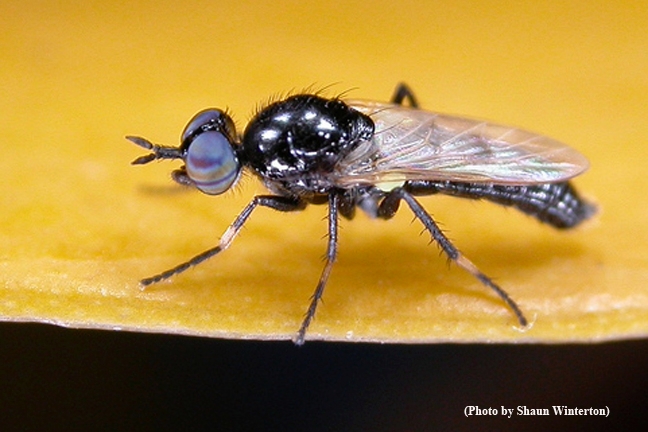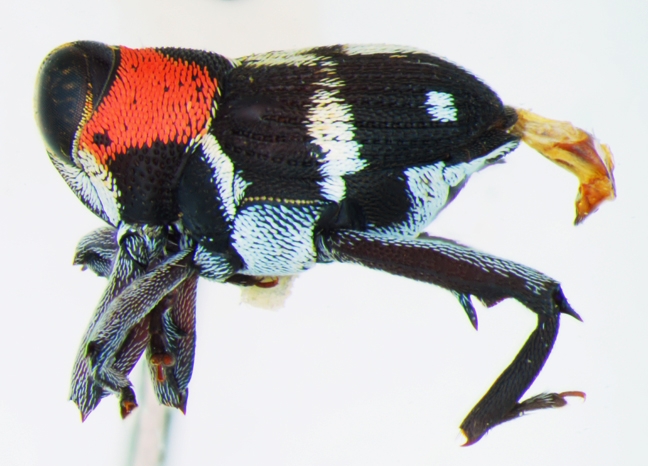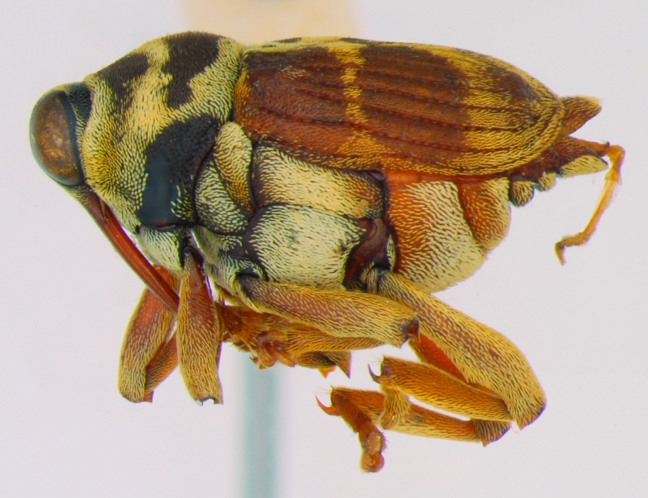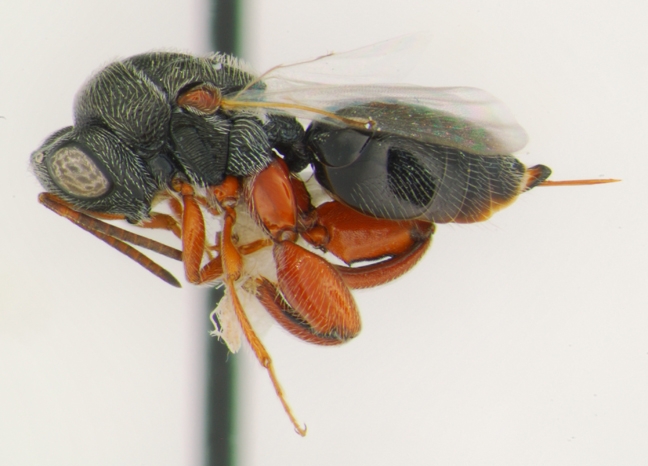
You know she likes stiletto Jimmy Choo shoes and anything that begins with a "D" for designer clothes and shoes and "E" for expensive. She's seen The World's Most Expensive Stilettos and dreams of stilettos by Stuart Weitzman and Borgezie that run as high as $3 million. (They run that high, but you can't run in them.)
But apparel won't last as long as the gift that the Bohart Museum of Entomology, UC Davis Department of Entomology and Nematology, is dangling in front of us.
Ready for this? A stiletto fly. Genus: Agapophytus. It needs a species name. If you'd like to adopt it and own the naming rights, you can--with a sponsorship that will help the Bohart Museum's research.
Shaun Winterton of the California Department of Food and Agriculture, a Bohart associate, collected the stiletto fly (below) in western Australia and photographed it.
"'O sole mio!" Deep in the heart of our soul (sole?), we know it's better than designer shoes.
A little information on the Stiletto fly from Winterton:
Common name: Stiletto fly
Family Therevidae
Origin: Western Australia: Golden Bay beach dunes
Describer: Shaun L. Winterton
Wrote Winterton: "This new species of Agapophytus in the family Therevidae has been found in the coastal heathland and beach fore-dunes of Western Australia, north of the city of Perth. The genus is known only from Australia and Papua New Guinea and currently includes about 40 known species, with about as many still to be formally named. The stiletto fly family includes many brightly colored species in Australia, many of which are mimics of wasps or ants. This species is unusual in being relatively small in body size, with a polished black body and yellow halters. Larvae of this family are snake-like predators in the sand dunes, swimming through the loose sand using vibrations to home in on prey."
Lynn Kimsey, director of the Bohart Museum of Entomology and a UC Davis proessor of entomology, launched the Bohart's biolegacy program, which is similar to the International Star Registry. "For a sponsorship of $2500, you will be able to select a species you would like to name in honor of a loved one or in respect for a community member," she said. "For your sponsorship, we will name a species after you or someone special to you. Sponsors will also be given a high resolution photography of their namesake, framed with the title page of the naming publication."
Unlike the Star Registry Program, though, the official species name "will be published in a scientific journal read by many in the international scientific community and available to everyone in perpetuity."
So, the Bohart Museum staff and scientists need your help. They describe as many as 15 new species annually "and our associates, many more."
"We could use your help with the selection of new species names in the course of our research," said Kimsey, who can be reached at lskimsey@ucdavis.edu or (530) 752-0493.
The Bohart Museum, home of nearly eight million specimens collected from throughout the world, joins a number of international organizations that offer species-naming opportunities.
Sponsorships help support museum research, in addition to offering a personal permanent legacy.
Can't you just see it? At a holiday gathering, your friend who has everything is asked what she received.
"Stiletto," she says.
"Omigosh, you got stilettos! Jimmy Choo? Who? Who?"
"No, this stiletto is a fly. And it's all mine. It's named after me!"
Attached Images:

Shaun Winterton of the California Department of Food and Agriculture, an associate of the Bohart Museum, collected this stiletto fly, genus Agapophytus, and photographed it. It now needs a name. (Shaun Winterton Photo)

This weevil, found in a Costa Rica forest, is up for adoption: it needs a name. (Photo by Andrew Richards, Bohart Museum of Entomology)

Here's another weevil, found in a Costa Rica forest, that needs a name. (Photo by Andrew Richards, Bohart Museum of Entomology)

Bohart senior museum scientist Steve Heydon collected this new species of chalcid wasp in the Algonedes Dunes. Genus: Psilochalcis. It needs a name. (Photo by Andrew Richards, Bohart Museum of Entomology)